The best camera for beginners in 2022:
The best camera for beginners in 2022:
perfect cameras for learning photography
By Rod Lawton published at digitalcameraworld.com
The best camera for beginners will be easy to use, but with the extra scope of interchangeable
lenses and manual control

What is the best camera for beginners? We think it's a camera that's not too expensive to buy but still offers great image quality and the scope to try out more advanced techniques and shooting styles as you learn more about photography. And for us that means one thing: a DSLR or a mirrorless camera!
There's always an ongoing debate about DSLR vs mirrorless cameras(opens in new tab) and which is best, but either type is a brilliant way to get you started in photography, and we've included both in our guide.
Broadly, a DSLR will be bigger and chunkier with better battery life. It might cost a little less to buy and you'll have wide range of lenses to choose from. A mirrorless camera will be smaller and lighter and will be a better choice for video and vlogging.
To be honest, DSLRs are a vanishing breed and almost all the main camera makers have swapped to developing mirrorless systems. HOWEVER, if you get a Canon or a Nikon DSLR, there are scores of lenses to choose from and your camera is likely to be perfectly usable for years to come.
We've got a few more pointers to choosing the best beginner camera at the bottom of this article, but what it boils down to is price, versatility and ease of use.
When you buy, you do need to think about lenses.
DSLR and mirrorless cameras are typically sold both 'body only' or with a kit lens. Obviously buying body-only is cheaper, but it's a false economy – unless you have lenses already, it's always cheaper to get a kit rather than buying a lens separately. Usually, you will get a basic 3x zoom lens or similar – but that's fine to get started with.
We recommend a kit lens for each of these cameras below and they are almost always the standard lens option for these cameras.
Best camera for beginners in 2022
1. Olympus OM-D E-M10 Mark IV
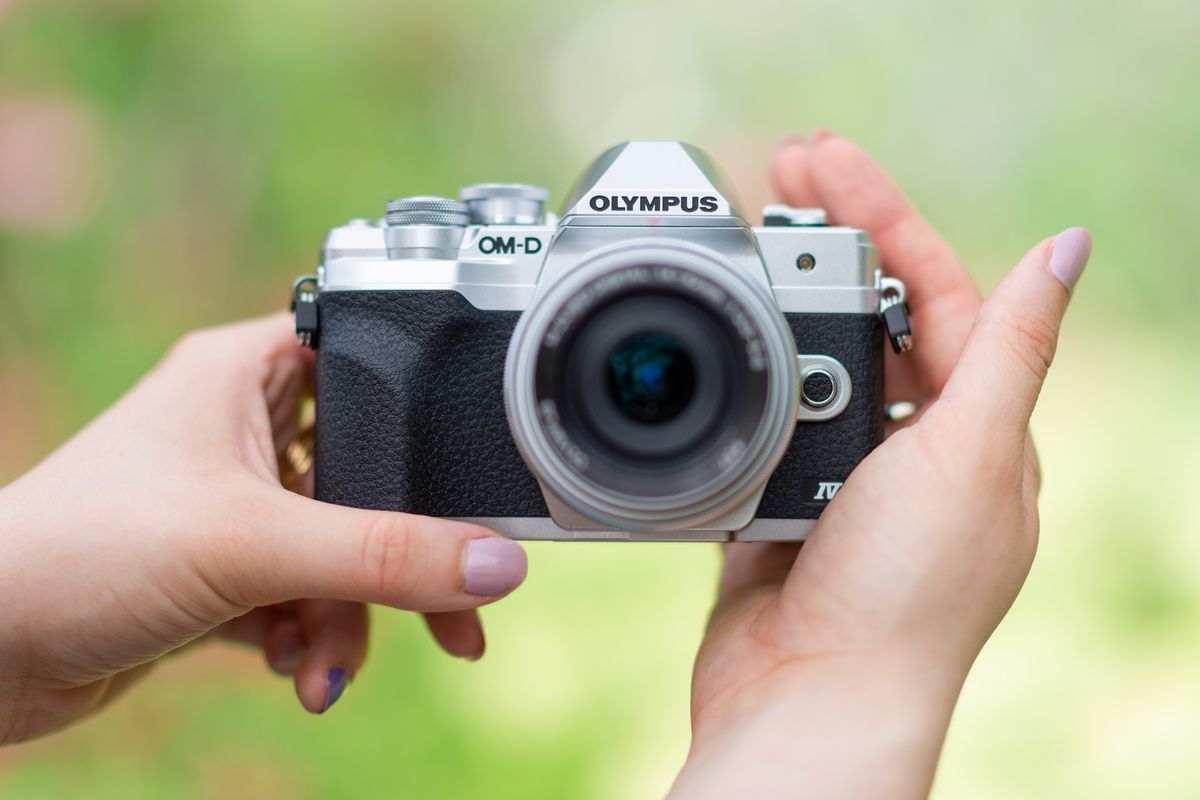
REASONS TO BUY + Latest 20MP sensor
+ 5-axis in-body stabilisation
REASONS TO AVOID - MFT sensor smaller than APS-C
- Plastic build
With a new 20MP sensor, incrementally improved in-body image stabilization and a new flip-down and tiltable monitor, the Olympus OM-D E-M10 Mark IV has plenty to shout about. Retaining the 4K video and attractive styling that made the Mark III so attractive to consumers, the Mark IV is a great choice for anyone looking for an entry-level camera that can do pretty much everything. This is one of our favorite pint-sized cameras ever: it's small enough to carry around anywhere, and much more powerful than it looks. The OM-D E-M10 Mark IV is a camera that could be with you for a long time to come.
• Recommended kit lens: Olympus M.Zuiko Digital ED 14-42mm f/3.5-5.6 EZ
Read more: Olympus OM-D E-M10 Mark IV review(opens in new tab)
2. Nikon Z50
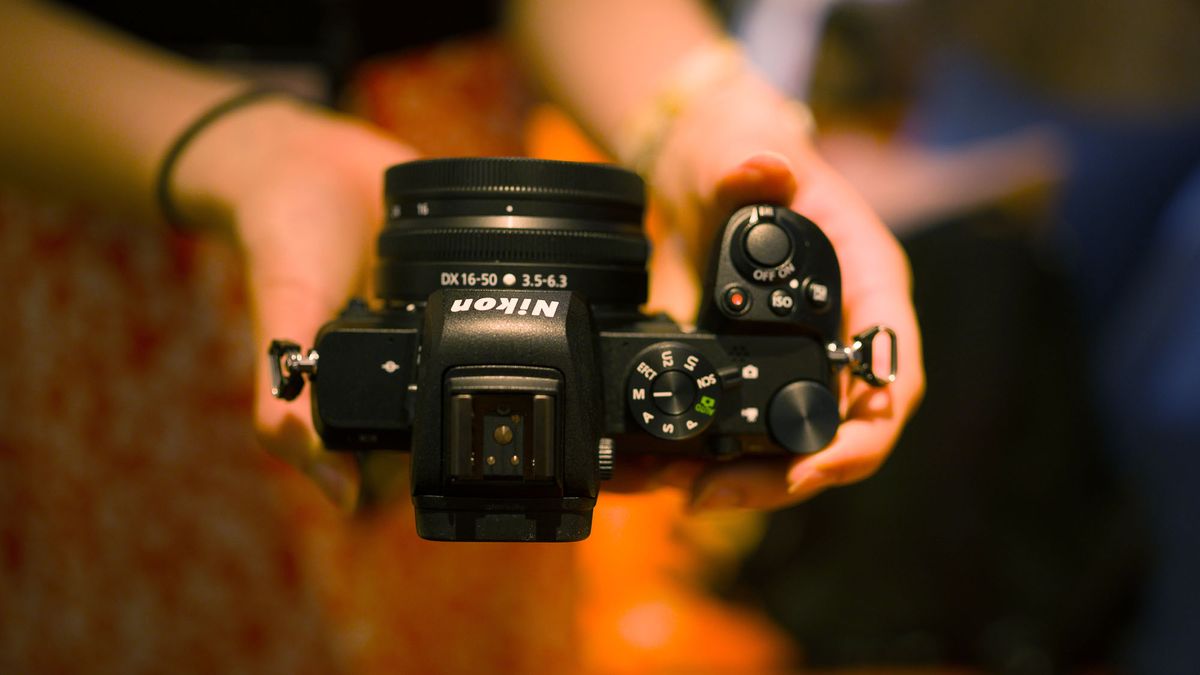
REASONS TO BUY + Good value from the start
+ Compact body and kit lens
+ 4K video and 11fps shooting
REASONS TO AVOID - No in-body stabilization
- Limited lens range so far
Despite its small size, the Nikon Z50 has a good grip and good external controls, and the retracting 16-50mm kit lens is remarkable not just for its pancake lens dimensions but for its overall performance. Key selling points include 4K video, 11fps burst shooting, and the fact that its Z mount is identical to that on the larger cameras, so you can use dedicated Nikkor Z DX lenses, full frame Nikkor Z lenses and regular Nikon DSLR lenses via the FTZ adaptor. Best of all, the Z50 is terrific value, especially when bought as a twin-lens kit. However, long after its launch it still only has three native DX format lenses, so that's a disappointment – it means you're stuck with using older DSLR lenses via Nikon's FTZ adaptor for now, or bigger and more expensive full frame Nikkor Z lenses which are limited for wide-angle photography because of the smaller sensor's 'crop factor'.
• Recommended kit lens: NIKKOR Z DX 16-50mm f/3.5-6.3 VR
Read more: Nikon Z 50 review
3. Sony A6000

REASONS TO BUY + Small and lightweight build
+ Built-in electronic viewfinder
REASONS TO AVOID - No 4K video
- Relatively old model
Although it’s now six years old, the A6000 is still one of Sony’s best entry-level cameras, especially as it can often be had with some decent discounts – it significantly undercuts the newer A6100, A6400 and A6600 models on price, while being pretty much in the same ballpark for stills photography. With its diminutive compact camera styling, and access to Sony’s range of interchangeable lenses, it’s a small body that packs a big punch. Resolution from the 24.3MP image sensor is very good, though the 1,440k-dot resolution of the electronic viewfinder is a little weak by today's standards, and the 921k-dot tilting screen feels quite cramped too. It lacks the ability to record 4K movies and it doesn't have the high-tech AF of Sony's latest A6000-series cameras. But if you can live without those, the solid build, image quality, continuous shooting and autofocus performance are better than you'd ever expect from its price.
• Recommended kit lens: Sony 16-50mm f/3.5-5.6 OSS
Read more: Sony A6000 review
4. Canon EOS Rebel SL3 / EOS 250D / EOS 200D Mark II

REASONS TO BUY + A lightweight, intuitive DSLR
+ Superb Live View shooting
REASONS TO AVOID - Larger than mirrorless rivals
- Relatively few AF points
This isn't the cheapest DSLR you can buy by any means, but very often it's worth paying a little extra money to get a much better range of features – and this is the perfect example. The EOS Rebel SL3 (aka EOS 250D / EOS 200D Mark II) has Canon’s top-of-the range APS-C sensor with 24.1MP of resolution and brilliant Live View shooting, thanks to a fully-articulating touchscreen display and Canon's fast Dual Pixel CMOS AF autofocus. In fact, we’d actually say this is one of the only DSLRs where composing shots with the screen is downright preferable to using the viewfinder. Canon also packs in 4K video wrapped up in the smallest DSLR body you're likely to see – though if it's specifically video you're after, one of the SL3's mirrorless rivals will probably do a better job.
• Recommended kit lens: Canon EF-S 18-55mm f/4-5.6 IS STM
Read more: Canon EOS SL3(opens in new tab) / Canon EOS 250D review
5. Nikon Z fc

REASONS TO BUY + Glorious looks
+ Dial-based controls
REASONS TO AVOID - Z50 is cheaper
- Few DX Z-mount lenses
The Nikon Z fc is, without a doubt, the coolest-looking camera on this list. It's a retro-styled mirrorless machine with dial-based controls, and it's a joy to handle, to use, and to be seen using. Internally, it's basically the same deal as the Nikon Z50, with the same APS-C sensor and processor and many of the same specs. A few extra features like a built-in flash have been shaved off, and it is more expensive than the Z50, so if you don't care about aesthetics then Nikon's other DX-format camera is the smarter choice. But if you're the sort of person who can't resist the siren song of the best retro cameras(opens in new tab), the Nikon Z fc will be right up your alley. It's not the cheapest camera for beginners, but you get a lot of features for your money, and its looks alone could inspire you to take up photography seriously.
• Recommended kit lens: NIKKOR Z DX 16-50mm f/3.5-6.3 VR
Read more: Nikon Z fc review
6. Nikon D3500
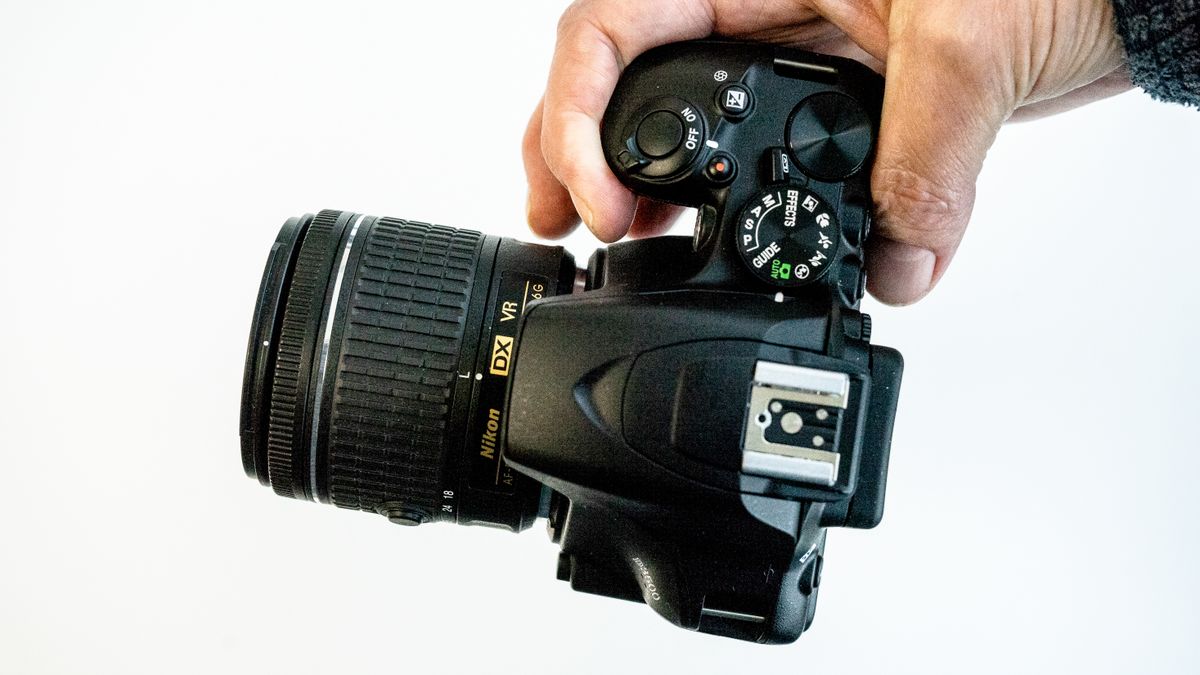
REASONS TO BUY + Interactive 'Guide' shooting mode
+ Solid performance; good handling
REASONS TO AVOID - Fairly basic controls
- LCD has no tilt or touchscreen
If you’re worried about DSLRs being complicated, don’t be. The Nikon D3500 has a brilliant ‘Guide’ shooting mode that acts as a fully interactive guide to photography and camera settings, delivered via the rear LCD screen. The D3500's controls are straightforward and easy to get to grips with. Its price means it does strip back on some more advanced features. For example, there’s no Custom Settings menu for tailoring camera functions to your preferences, as featured on every other series of Nikon DSLRs. The autofocus in Live View and movie capture modes is somewhat sluggish, though the Nikon AF-P DX 18-55mm f/3.5-5.6G VR lens lens speeds it up and is the best kit lens to go for. Overall, the Nikon D3500's image quality and performance are extremely good for the price, and the 5fps burst rate is pretty sporty for an entry-level DSLR. Take a look at the many other great Nikon lenses(opens in new tab) that this DSLR system allows you to use.
• Recommended kit lens: Nikon AF-P DX 18-55mm f/3.5-5.6G VR
• Read more: Nikon D3500 review(opens in new tab) | Nikon D3500 vs D3400
7. Sony ZV-E10

REASONS TO BUY + Autofocus features and performance
+ Vari-angle screen
+ Clip on wind muffler
REASONS TO AVOID - No in-body stabilization
- No viewfinder
If your interest lies half and half with video and photography, then a dedicated vlogging camera like the new Sony ZV-E10 is perfect. It cuts back a little on the photography side, lacking an electronic viewfinder, but it comes back with video features, including 4K video and a fully-vari-angle screen. It also packs a large and well-performing internal microphone (with clip-on muffler), Sony's excellent autofocus, and an appealing price tag. It's a shame that there is no in-body image stabilization, and the menus can't be touch-controlled (a rather glaring omission for a vlogging camera, perhaps), but for beginners to video, this is unlikely to be a big drawback. What's more important is that because it uses the Sony E mount, it has access to a large number of Sony and independent brand lenses.
• Recommended kit lens: Sony E 16-50mm f/3.5-5.6 power zoom
Read more: Sony ZV-E10 review
8. Panasonic Lumix G100
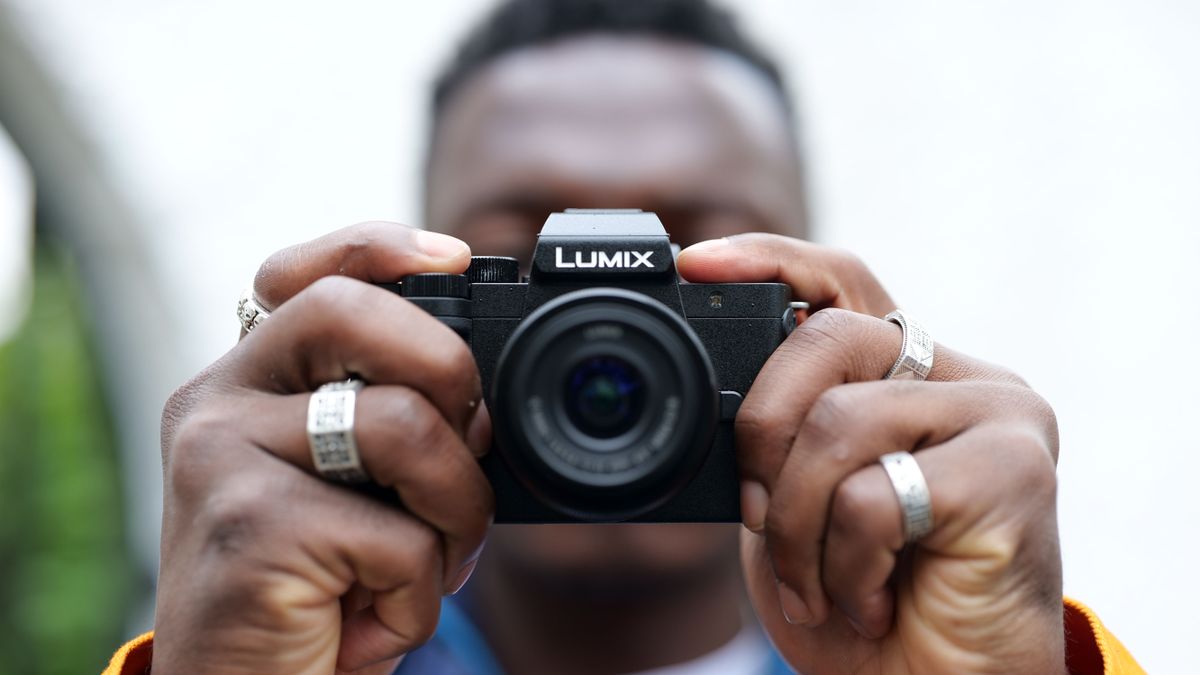
REASONS TO BUY + Quality video and stills
+ Audio-recording capabilities
+ Bright EVF and articulated LCD
REASONS TO AVOID - No in-body stabilization
- No headphone jack or USB-C
Interested in the idea of vlogging? The Panasonic Lumix G100 is a great alternative to the Sony ZV-E10. It has a smaller Micro Four Thirds sensor but it does have an electronic viewfinder which the Sony doesn't, so it's a pretty even match. In fact, both photographers and vloggers will enjoy the simplicity of the Lumix G100. It makes it easy to capture high-quality video and stills with its approachable button layout. Even people uninterested in the technicalities of capturing great-looking videos will be able to get results with this camera. With its mini-DSLR styling and an electronic viewfinder, Panasonic has given the G100 an edge in a highly competitive market.
• Recommended kit lens: Panasonic Lumix G Vario 12-32mm f/3.5-5.6 ASPH.
Read more: Panasonic Lumix G100 review(opens in new tab)
9. Canon EOS M50 Mark II
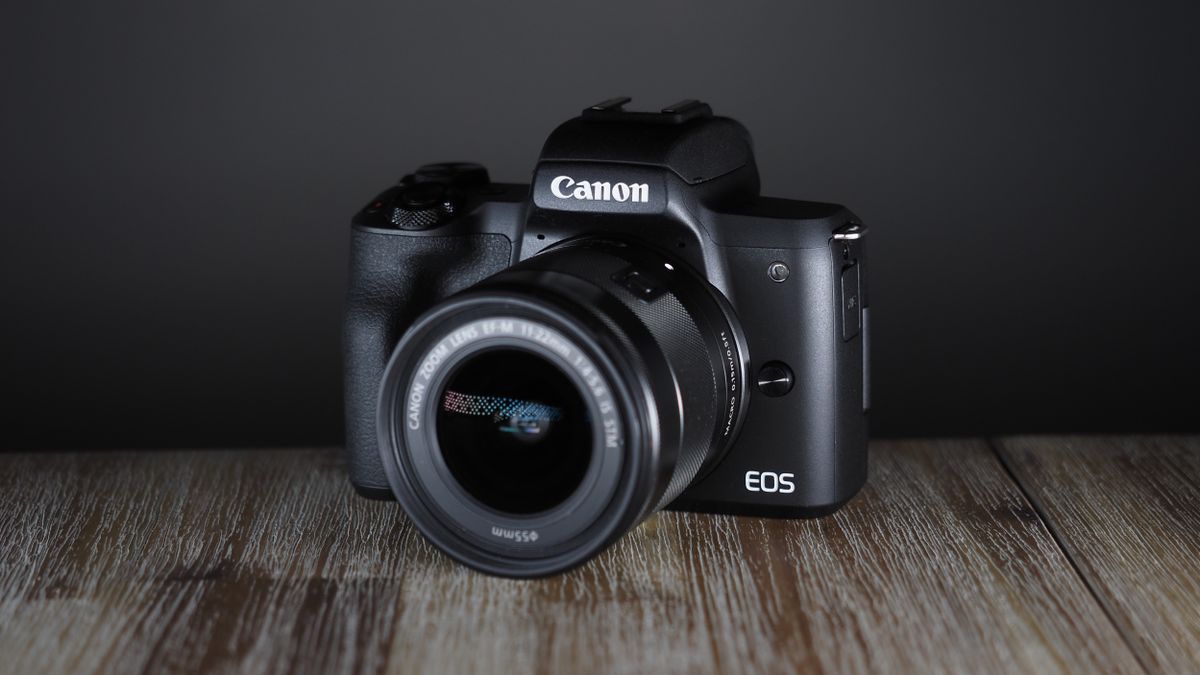
REASONS TO BUY + Built-in electronic viewfinder
+ Good articulating touchscreen
REASONS TO AVOID - Compromised 4K video
- Simplified exterior controls
On the surface this is a modest upgrade over the original Canon EOS M50(opens in new tab), but the additions make it worth picking up over its predecessor. These include improved autofocus (along with eye detection in stills and video), along with big boons for video shooters in the form of clean HDMI out, vertical video recording and the ability to livestream direct to YouTube. Alas, while it's an excellent 1080p camera, it's a poor option for 4K – which loses Dual Pixel AF (left lumbered with contrast detect) and suffers a 1.6x crop. However, it packs a lot of other tech into its compact body, including a great 24.1MP sensor, 10fps shooting, and the fact that it has a viewfinder (which many similarly priced mirrorless cameras lack). This is a cute and easy to use camera that's really rather versatile, and it's a great mirrorless alternative to the Canon Rebel SL3/EOS 250D, but offers similar features in a smaller camera.
• Recommended kit lens: Canon EF-M 15-45mm f/3.5-5.6
Read more: Canon EOS M50 Mark II review(opens in new tab)
10. Fujifilm X-T200

REASONS TO BUY + Big 3.5-inch vari-angle touchscreen
+ Good 4K video features
+ Neat design, and now even lighter
REASONS TO AVOID - Simplified external controls
- Regular CMOS not X-Trans sensor
- Stock shortages
The Fujifilm X-T200 is light and compact, but looks and feels like an old-school 35mm SLR film camera. Best of all, the X-T200 has a big new 3.5-inch vari-angle touchscreen with twice the resolution of most rivals and a 1:6 aspect ratio perfectly suited to video. It also has an electronic viewfinder and can shoot 4K video as well as 24-megapixel stills. Its 15-45mm kit lens is electrically powered and is a bit of an acquired taste, but it's really compact and offers a much wider angle of view than most kit lenses, making it ideal for interior shots and big landmarks. We loved the X-T200 when if first came out, and we still do, though the global pandemic seems to have caused stock shortages that are making the X-T200 harder to find right now.
• Recommended kit lens: Fujinon XC 15-45mm f/3.5-5.6 OIS PZ
Read more: Fujifilm X-T200 review
11. Canon EOS R10
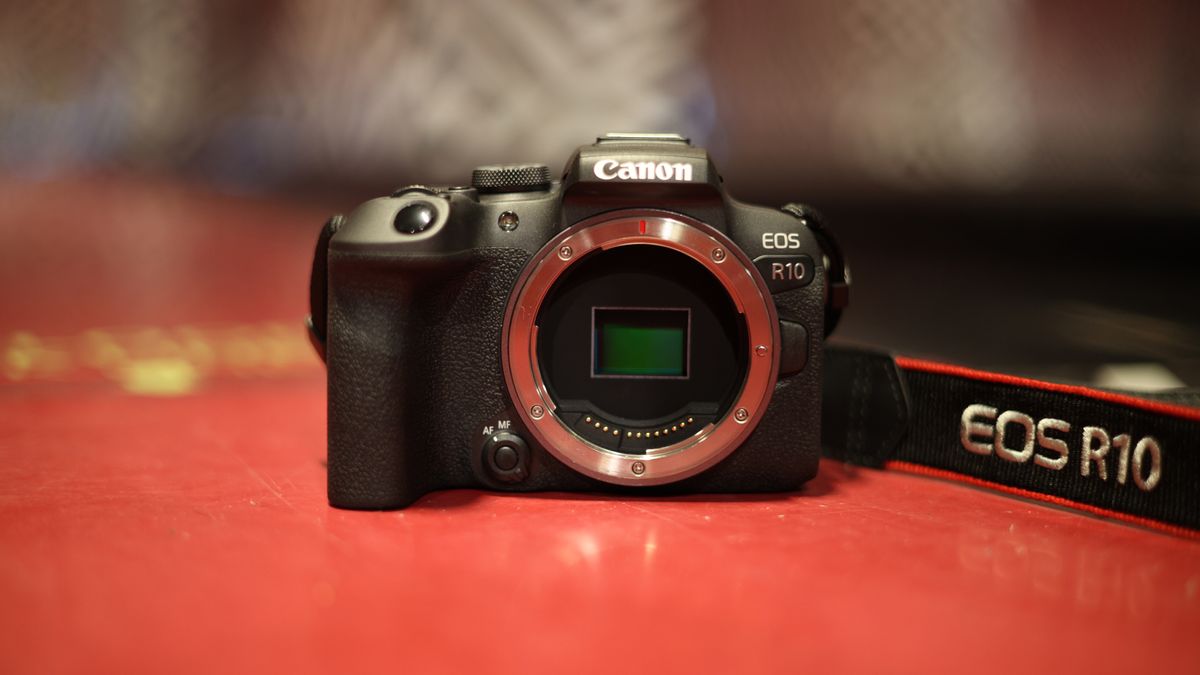
REASONS TO BUY + Pro-grade autofocus
+ Pro-grade burst shooting
+ 4K 60p and 1080p 120p
REASONS TO AVOID - No in-body stabilization
- 4K 60p is cropped
- No weather sealing
The Canon EOS R10 is a brilliant value proposition, offering some seriously advanced specs in a light, affordable, novice-friendly body. If you know what you're doing with this camera, you can get some seriously impressive results – and if you have no idea what you're doing, it will help you develop your skills.
It's a fantastic all-purpose camera, with powerful stills specs and impressive video capabilities – though if you want to shoot 4K 60p, this probably isn't going to be an ideal vlogging / presenting camera due to the combination of 1.6x APS-C effect and 64% additional crop.
• Recommended kit lens: Canon RF-S 18-45mm f/4.5-6.3(opens in new tab)
Read more: Hands on: Canon EOS R10 review(opens in new tab)
Best camera for beginners: What to look for
- Price: Yes, price is important, especially for beginners, we get that! Don't rule out spending a little extra, though, as it will often get you a lot more features.
- Interchangeable lenses: There's only so much you can achieve with your kit lens, so if you plan on buying more, go for a camera with a good lens range behind it.
- Simple controls: All these cameras have automatic modes that will help you build your confidence, and manual controls for later on, when you get more ambitious.
- Manual modes: The auto modes on cameras may start out smarter than you are, but that won't last! You'll also need manual control, because one day you will need to take charge.
- Video: 4K has become the new norm for video capture, so if your main interest is vlogging, choose a more recent 4K mirrorless camera.
- Megapixels: Megapixels aren't everything, but they do have an impact on image quality. However, almost all beginner cameras are in the 16-24MP range, and you won't see colossal differences in the results.
Best camera for beginners: Kit lenses
If you're buying your first DSLR or mirrorless camera, make sure you get it with a kit lens. While most cameras will be cheaper body-only, the price difference with a kit lens added on top is often small, and a LOT cheaper than buying both separately.
Some entry-level cameras will have multiple kit lens options, so if there's one that we would specifically recommend, then we say so above. Do be wary of super-cheap but ancient kit lenses that retailers are trying to offload that don't have image stabilization, for example. These might save you a few percent at purchase, but you'll probably regret it later.
How we test cameras
We test DSLR and mirrorless cameras(opens in new tab) both in real-world shooting scenarios and in carefully controlled lab conditions. Our lab tests measure resolution, dynamic range and signal to noise ratio. Resolution is measured using ISO resolution charts, dynamic range is measured using DxO Analyzer test equipment and DxO Analyzer is also used for noise analysis across the camera's ISO range. We use both real-world testing and lab results to inform our comments in buying guides.

